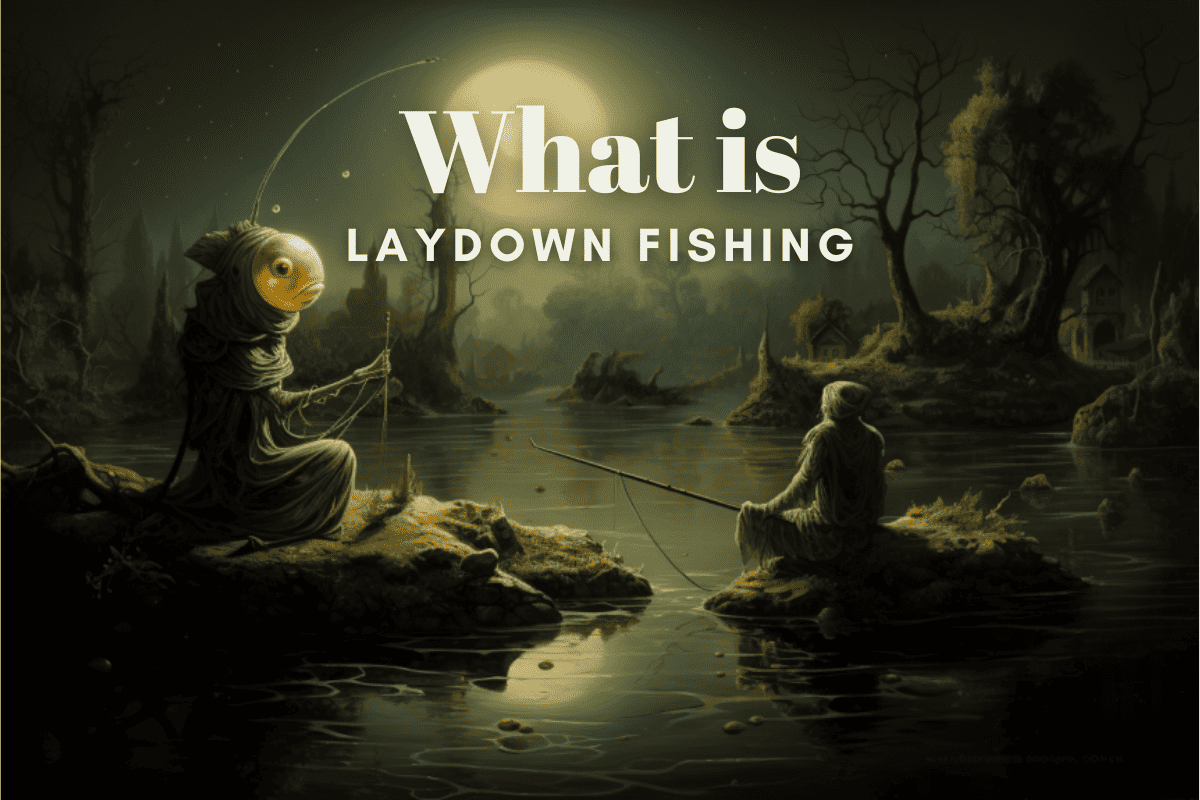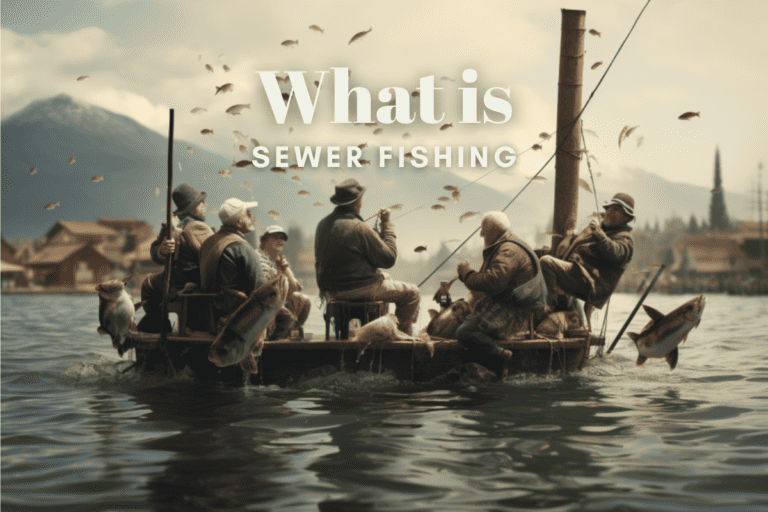What is A Laydown Fishing? Bass Fishing Secrets

Have you heard about laydowns? These submerged timber structures are a bass angler’s goldmine.
This article uncovers the power of laydowns, revealing how they’re key to enhancing your bass fishing success. You’ll learn effective techniques, top lure choices, and insider tips from the pros.
So, let’s dive in, uncover the potential of laydowns and make you part of the successful bass fishing community.
What is A Laydown Fishing? Understanding the Role of Laydowns in Bass Fishing
Laydown fishing is a specialized technique in the world of bass angling, focusing on the strategic utilization of natural structures, specifically fallen trees or submerged timber. These structures, commonly referred to as “laydowns,” play a pivotal role in the behavior and habitat of bass. Here’s a deeper dive into the significance of laydowns in bass fishing:
- Natural Cover:
- Laydowns provide bass with essential cover, offering protection from predators and a vantage point to ambush prey. The intricate branches and submerged foliage create a maze-like environment, making it a haven for bass.
- Food Source:
- The submerged timber attracts smaller aquatic life, which in turn draws in baitfish. This congregation of prey makes laydowns a prime feeding ground for bass.
- Temperature Regulation:
- Laydowns can offer cooler, shaded areas during hot days and retain warmth during colder periods, making them attractive spots for bass seeking comfortable water temperatures.
- Seasonal Significance:
- During the spawning season, bass often use the protection of laydowns for nesting, making these areas even more critical for anglers.
- Tactical Approach:
- When fishing laydowns, precision casting is crucial. Anglers aim to get their lures as close to the structure as possible, mimicking the natural movement of prey to entice bass out of their cover.
- Lures like jigs, soft plastics, and crankbaits are often favored for laydown fishing due to their ability to navigate through the timber without getting snagged.
- Safety Considerations:
- While laydowns are productive fishing spots, they can also pose challenges. The submerged timber can easily entangle fishing lines, so anglers need to be prepared for potential snags and have the tools to free their gear.
- Environmental Respect:
- Laydowns are vital ecosystems for various aquatic species, not just bass. Anglers should approach these areas with care, avoiding any actions that might disturb or damage the habitat.
Laydown fishing offers bass anglers a unique opportunity to target bass in their natural habitat, using the environment to their advantage. By understanding the role of laydowns and approaching them with the right techniques and respect, anglers can experience some of the most rewarding moments in bass fishing.
Perfecting Your Approach: Techniques for Fishing Laydowns
Fishing laydowns can be both rewarding and challenging. The dense structure of fallen trees and submerged timber provides a sanctuary for bass, but it also presents obstacles for anglers. To maximize success and minimize snags, it’s essential to refine your techniques. Here’s a guide to perfecting your approach when fishing laydowns:
- Analyze the Laydown:
- Before casting, take a moment to study the laydown. Identify the thickest parts, potential bass hiding spots, and areas that might cause snags. This analysis will guide your casting strategy.
- Start from the Outside:
- Begin by casting to the outer edges of the laydown before working your way in. This ensures you don’t spook bass hiding deeper within the structure.
- Use Weedless Lures:
- Lures designed to resist snagging, like weedless jigs or Texas-rigged soft plastics, are ideal for laydown fishing. Their design allows them to navigate through branches without getting caught.
- Employ a Vertical Approach:
- In denser laydowns, consider dropping your lure vertically into openings in the timber. This technique can get your bait closer to bass hiding deep within the structure.
- Vary Your Retrieve:
- Mix up your retrieval speeds and actions. Sometimes a slow, steady retrieve works best, while other times a more erratic action can entice strikes.
- Stay Stealthy:
- Approach laydowns quietly and maintain a distance to avoid spooking the bass. Use a quiet trolling motor or paddle gently if you’re in a kayak or boat.
- Be Prepared for Snags:
- Even with the best techniques, snags are inevitable. Carry needle-nose pliers or a lure retriever to free your bait without damaging the laydown.
- Practice Precision Casting:
- Laydown fishing often requires pinpoint accuracy. Spend time practicing your casting skills to ensure you can place your lure exactly where you want it.
- Use Strong Line and Rod:
- Given the structure-rich environment, it’s advisable to use a heavier line and a strong rod. This setup not only helps in pulling bass out of the dense cover but also reduces the chances of breaking off.
- Observe and Adapt:
- Pay attention to how bass are reacting to your lures and techniques. If something isn’t working, don’t hesitate to switch up your tactics.
While laydown fishing presents its set of challenges, mastering the techniques can lead to highly productive sessions. With patience, practice, and a keen understanding of bass behavior within these structures, you can turn laydowns into one of your favorite fishing spots.
Top Lures for Successful Laydown Bass Fishing
Laydown bass fishing requires specific lures that can navigate the intricate structures of submerged timber without getting snagged. While the ideal lure might vary based on conditions and personal preferences, some general lure guidance can enhance your success rate in these environments. Here’s a rundown of top lure categories and their applications for laydown bass fishing:
- Jigs:
- Weedless Jigs: Designed to move through dense structures without snagging, these are perfect for laydowns. Their skirted design mimics the movement of prey, enticing bass to strike.
- Guidance: Opt for natural colors that blend with the environment. Adjust the weight based on the depth and density of the laydown.
- Soft Plastics:
- Texas-Rigged Worms: The weedless nature of the Texas rig makes it ideal for navigating laydowns. The worm’s subtle movement can lure bass out of their hiding spots.
- Creature Baits: These mimic crawfish or other bottom-dwelling creatures, a favorite snack for bass.
- Guidance: Choose colors based on water clarity. Darker shades for murky waters and translucent or natural colors for clearer waters.
- Crankbait:
- Square-Bill Crankbaits: Their design allows them to deflect off timber, reducing snags. They dive shallow, making them suitable for the upper sections of laydowns.
- Guidance: Use in areas with less dense timber. Vary retrieval speeds to mimic injured baitfish.
- Spinnerbaits:
- Their flashy blades and skirted design attract bass, while their single-hook setup reduces the chances of snags.
- Guidance: Opt for spinnerbaits with larger blades in murkier waters to create more vibration and attract bass.
- Topwater Lures:
- Frogs or Poppers: These are ideal for fishing the surface above laydowns, especially during early morning or late evening when bass are more active on the surface.
- Guidance: Use a twitching motion to mimic prey on the water’s surface. Ensure the lure is weedless to avoid snags.
- Swimbaits:
- These lifelike lures can be rigged weedless and offer a realistic swimming action that bass find hard to resist.
- Guidance: Choose a size that matches the prevalent baitfish in the area. Swim the bait close to the laydown, mimicking a fish swimming by.
While the specific lure choice might vary based on conditions, the key is to opt for lures that can navigate the challenges of laydowns without frequent snags. By understanding the behavior of bass within these structures and matching your lure to the conditions, you can significantly enhance your success rate in laydown bass fishing.
Insider Tips and Tricks for Maximizing Bass Catch From Laydowns

Experienced anglers often have a knack for maximizing their catch from fallen trees and submerged branches. They know that these spots can reload with fish day to day and even hour to hour. It’s not just about finding these underwater hideouts, but also about knowing how to fish them.
They’ll tell you that you’ve got to be patient, methodically working your bait, and always ready for that electrifying moment when a bass strikes. It’s a dance between angler and fish, a shared secret between those in the know. Belonging to a community that understands the thrill of the catch and the satisfaction of unlocking the secrets of the laydown is part of the experience.
And remember, sometimes it’s not a one-time jackpot. Often, these magic trees can yield a bounty over time, so don’t be shy about repeating a visit.
Final Thoughts
Laydowns are indeed a gold mine for bass anglers. With the right approach and lure selection, these fallen trees can turn an average fishing trip into an unforgettable catch. Like hidden treasure chests in the aquatic world, laydowns just keep giving.
So, don’t miss out on the bounty that laydowns offer – master the art of fishing them and see your bass fishing game reach new highs.
Frequently Asked Questions (FAQ)
Q: What is laydown fishing?
A: Laydown fishing refers to the technique of fishing around fallen trees or branches in the water. It is a popular method for catching bass.
Q: How can laydowns be used to catch bass?
A: Laydowns provide a hiding spot for bass, as well as a source of food. By casting near or around a laydown, you increase your chances of catching a bass.
Q: What are the secrets to successful bass fishing in laydowns?
A: Some of the secrets to successful bass fishing in laydowns include using the right bait, fishing deep water, and understanding bass behavior around laying objects.
Q: What are some effective baits for laydown fishing?
A: Spinnerbaits, swim jigs, craw imitations, and shad imitations are all effective baits for laydown fishing. It’s important to use a bait that mimics the natural prey of the bass in that area.
Q: How should I approach fishing laydowns for bass?
A: When fishing laydowns for bass, it’s best to approach from the outside of the laydown and cast towards the heart or branches of the laydown. This allows you to target the areas where bass are most likely to be hiding.
Q: Can I catch big bass from a laydown?
A: Yes, laydowns can hold big bass. Many experienced anglers believe that some of the biggest fish in a lake or river often hide in or around laydowns.
Q: Should I fish in shallow water or deep water when targeting laydowns?
A: It’s important to fish in both shallow and deep water when targeting laydowns. Bass can be found in both areas, so it’s best to cover all parts of the water column.
Q: How far away from the laydown should I cast?
A: The distance from the laydown that you should cast depends on various factors, including the size and structure of the laydown, water conditions, and the behavior of the bass. Experiment with different casting distances to see what works best in a particular situation.
Q: What are the key features of a good laydown for bass fishing?
A: A good laydown for bass fishing typically has several key features, such as branches that reach out into the water, a trunk that provides cover, and a location near deep water or other favorable conditions for bass.
Q: How can I avoid getting my bait hung in the branches of a laydown?
A: To avoid getting your bait hung in the branches of a laydown, try using weedless or snag-free hooks, and be mindful of your casting technique. It’s also important to pay attention to the depth at which you are fishing and adjust accordingly.





